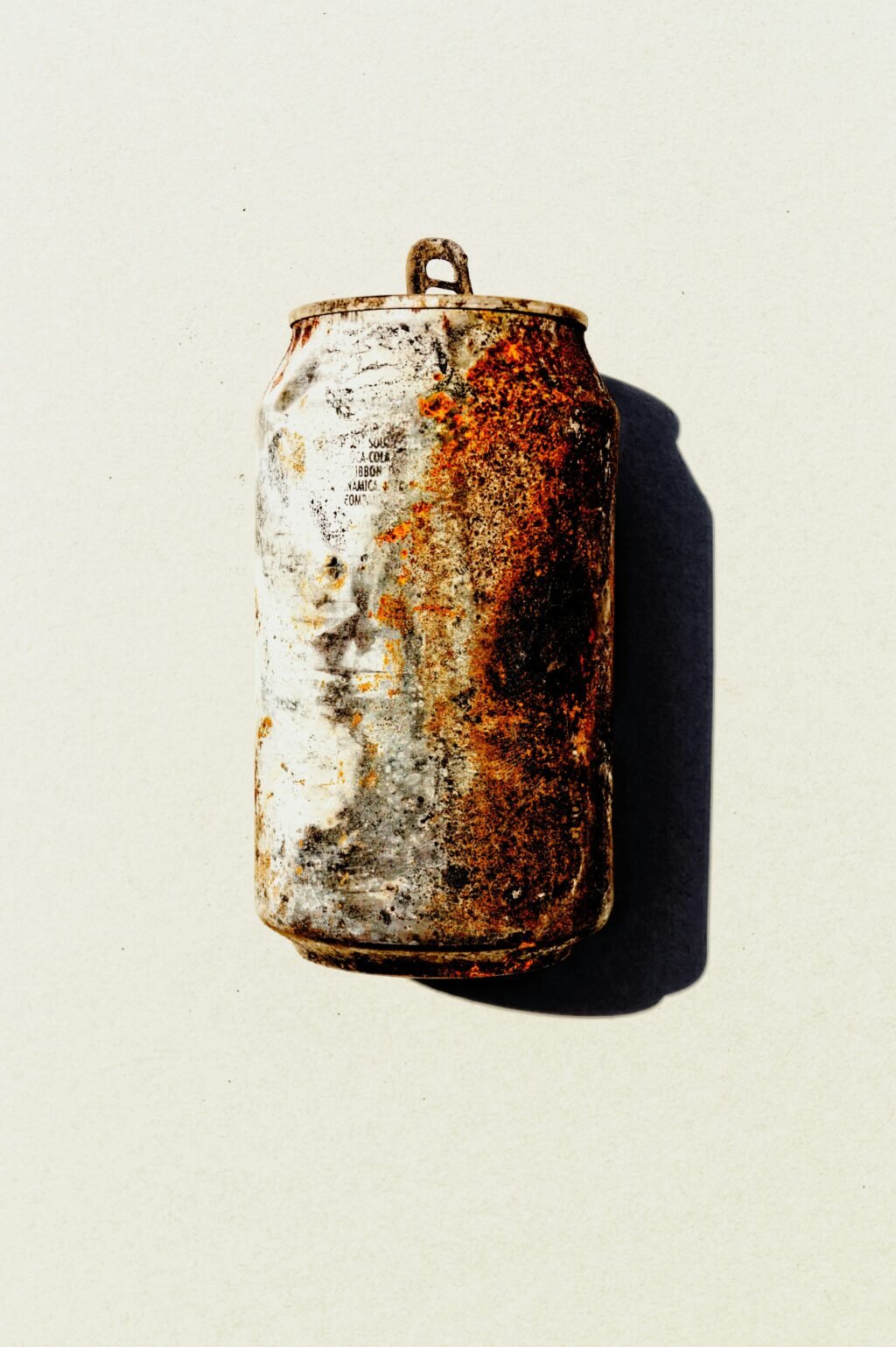
How to Restore the Shine to Oxidized Aluminum Surfaces
Understanding Oxidation of Aluminum
Oxidation is a natural chemical process that occurs when aluminum surfaces are exposed to air and moisture. This reaction leads to the formation of aluminum oxide, a compound that creates a protective barrier on the surface of the aluminum. While this layer can initially prevent further corrosion, it often results in the dull, chalky appearance commonly associated with oxidized aluminum surfaces.
The process of oxidation begins when aluminum reacts with oxygen in the environment. This reaction is accelerated in the presence of water, particularly in damp or humid conditions. Over time, the continuous exposure to these elements causes the thin protective layer of aluminum oxide to thicken, resulting in a change in surface texture and appearance. The affected aluminum can present a range of visual indicators such as a grayish hue, pitting, or a chalky residue, which diminishes its aesthetic appeal.
Several factors contribute to the rate of aluminum oxidation, including environmental conditions, the presence of salts or pollutants, and the specific alloy composition of the aluminum. For instance, aluminum found in coastal areas may oxidize faster due to the combination of high humidity and salt in the air. Moreover, different aluminum alloys can exhibit varying degrees of susceptibility to oxidation; some formulations are more resistant due to their alloying elements.
Understanding the chemistry of aluminum oxidation is crucial for effectively restoring these surfaces. Recognizing how environmental factors and surface treatments influence the oxidation process allows for targeted interventions. By addressing these issues, it becomes possible to revitalize oxidized aluminum surfaces, restoring their former luster and preventing further deterioration. This knowledge forms the foundation for effective maintenance and restoration strategies for aluminum-based materials.
Identifying Oxidized Aluminum Surfaces
Oxidized aluminum is a common issue that many may encounter, particularly with items used outdoors or exposed to the elements. The process of oxidation results in noticeable changes on the surface of aluminum materials, making identification critical for subsequent restoration efforts. Recognizing these transformations can save time and improve outcomes when rejuvenating affected surfaces.
One of the most straightforward signs of oxidation is a general dullness of the aluminum surface. Instead of the shiny, reflective quality typically associated with aluminum, oxidized areas often appear matte or lackluster. This dullness can occur on various items, including outdoor furniture, vehicles, and household appliances that experience frequent wear and exposure to moisture. As light interacts with this dull surface, it fails to reflect, leading to an unappealing aesthetic.
Another frequent indicator of oxidized aluminum is the presence of chalky or powdery residues. As oxidation progresses, aluminum may develop a white, flaky substance that can easily be wiped away with a cloth. This residue can be particularly pronounced around seams and edges, where moisture tends to accumulate more. When inspecting items, gently running a finger along the surface can help identify chalkiness that suggests oxidation.
In addition to visual cues, it is essential to assess the affected item’s location and frequency of exposure to environmental factors. Items left outside for extended periods, such as patio furniture or grills, are often more susceptible to oxidation due to moisture, humidity, and temperature fluctuations. Understanding these factors will assist in recognizing conditions that can lead to material degradation.
By familiarizing oneself with these signs of oxidation, individuals can better evaluate the state of their aluminum surfaces and determine the necessary steps for restoration. Addressing oxidation promptly will ensure that items remain both functional and visually appealing, prolonging their lifespan and enhancing their value.
Essential Tools and Materials for Restoration
Restoring oxidized aluminum surfaces requires the use of various tools and materials that facilitate effective cleaning and polishing. The selection of appropriate items is crucial to avoid further damage to the surface while enhancing its appearance. A well-rounded approach typically includes both common household items and specialized commercial solutions.
Among the most accessible and effective household items for aluminum restoration are vinegar and baking soda. These items are known for their natural cleaning properties. Vinegar’s acidity can break down oxidation, while baking soda serves as a gentle abrasive that can help in polishing the surface without scratching it. A mixture of these two ingredients can create a paste that adheres well to oxidized areas, making the cleaning process more efficient.
In addition to these natural cleaners, consider investing in commercial aluminum cleaning solutions specifically designed for this purpose. These products are often formulated to tackle oxidation and corrosion effectively. It is important to read the labels carefully to ensure that the products are safe for use on aluminum surfaces. Look for items that are pH balanced and free from harsh chemicals that could result in further damage.
Soft cloths or sponges are recommended for application, as they help avoid scratching the surface during the cleaning process. A microfiber cloth is particularly effective due to its soft fibers and ability to trap dirt and debris. Additionally, a set of brushes—specifically non-abrasive options—can be useful for reaching into crevices and intricate designs.
Finally, protective gear such as gloves and eyewear should be considered during the cleaning process. Safety is paramount, especially when using commercial cleaning solutions that may contain harmful substances. By carefully selecting the right tools and materials, one can ensure effective restoration of oxidized aluminum surfaces while maintaining safety and preventing damage.
Step-by-Step Cleaning Process
Reviving oxidized aluminum surfaces requires a systematic approach to ensure effective cleaning while minimizing any potential damage. Start by gathering the necessary materials, including a bucket, water, a soft-bristled brush or sponge, a cleaning agent suitable for aluminum, gloves, and safety goggles. It is imperative to undertake this cleaning in a well-ventilated space to avoid inhaling any harmful fumes and to protect the surrounding area from overspray or spills.
Begin the cleaning process by removing any loose dirt or debris using a dry cloth or brush. This initial step prevents scratching the aluminum during the cleaning. Next, prepare the cleaning solution according to the manufacturer’s instructions. Options include a specialized aluminum cleaner, a mixture of vinegar and water, or a solution of baking soda and water. Each of these agents can effectively break down the oxidation and restore the shine of the aluminum.
After preparing the solution, wet the aluminum surface with clean water to help loosen the oxidation. Then, apply the chosen cleaning agent generously onto the affected areas. Utilizing a soft-bristled brush or sponge, gently scrub the oxidized aluminum in a circular motion. Be careful not to apply excessive force, as this could lead to scratches or further damage. It is advisable to work in small sections to ensure thorough cleaning.
Once you observe that the oxidation is lifting, rinse the surface with clean water to remove any residue of the cleaning agent. It is essential to rinse thoroughly, as any leftover chemicals can lead to further oxidation. After rinsing, dry the aluminum surface completely using a soft, lint-free cloth. This final step helps prevent water spots and preserves the newly restored shine. Always remember to follow safety precautions by wearing gloves and goggles throughout the process, ensuring a safe and effective cleaning experience.
Polishing Techniques for a Brilliant Finish
Polishing aluminum surfaces is essential for restoring their original luster and ensuring a brilliant finish. The process begins by selecting the appropriate polishing technique based on the specific type of aluminum item being restored. Various polishers are available, including rotary buffers, orbital polishers, and hand-held polishers. Each type has its advantages and is suited for different applications. Rotary buffers, for instance, can achieve a high shine quickly but require careful handling to avoid surface damage. Orbital polishers offer a gentler option, reducing the risk of swirling marks, making them ideal for more delicate aluminum surfaces.
The choice of polishing compounds also plays a crucial role in the restoration process. There is a wide range of compounds designed specifically for aluminum, including fine-cut and swirl-removal products. Fine-cut compounds are used for initial polishing, effectively removing oxidation while preparing the surface for finer detailing. Swirl-removal products help in achieving a lustrous finish without producing undesirable swirls, which can detract from the overall appearance. It is vital to choose a compound that matches the condition of the aluminum surface, as using an overly abrasive product may lead to additional damage.
Application methods can significantly affect the final outcome. Consistent, overlapping passes while polishing ensure even coverage and prevent uneven wear. Using a low-speed setting for initial polishing will allow for better control and reduce overheating of the aluminum, which can lead to burnishing. It is also advisable to work in small sections, applying compound and polishing methodically to achieve the best results. By adhering to these techniques and utilizing the right tools and compounds, one can effectively restore the shine to oxidized aluminum surfaces, enhancing their visual appeal and extending their lifespan.
Preventative Measures to Avoid Future Oxidation
Once aluminum surfaces have been restored to their original luster, it is imperative to adopt preventative care techniques to maintain this shine and avert future oxidation. The longevity of the restored appearance relies heavily on proper maintenance and protective measures. One effective strategy is to apply a protective coating specifically designed for aluminum surfaces. These coatings act as a barrier against moisture, chemicals, and other corrosive agents that contribute to oxidation. Products such as clear sealants or wax designed for metals can provide an extra layer of protection and enhance the aesthetic appeal of the aluminum.
Regular maintenance is essential in prolonging the shine of aluminum items. Establishing a cleaning routine that involves gentle washing with mild soap and water can effectively clear any particles or debris that may adhere to the surface. It is advisable to avoid abrasive cleaners and scouring pads, as these can scratch the protective coating and expose the underlying aluminum to the elements. Additionally, incorporating a routine inspection can help identify early signs of oxidation, allowing for timely intervention before significant damage occurs.
Proper storage is another critical factor in preventing future oxidation of aluminum. When not in use, aluminum items should be stored in a dry, cool location to minimize exposure to humidity and temperature fluctuations. Utilizing breathable covers rather than plastic ones can also prevent moisture buildup which can accelerate oxidation. For outdoor items, consider using weather-resistant materials or designated storage containers that offer extra protection against the elements. By implementing these preventative measures, it is possible to keep aluminum surfaces in pristine condition, ensuring they remain shiny and corrosion-free for years to come.
Common Mistakes to Avoid During Restoration
Restoring oxidized aluminum surfaces can significantly enhance their appearance and extend their lifespan. However, there are several common mistakes that individuals often make during this process that can lead to unsatisfactory results or further damage. One of the most prevalent errors is the use of abrasive materials for cleaning. While it may seem logical to use scouring pads or steel wool to remove oxidation, these can scratch the aluminum surface, creating a dull, unattractive finish. Instead, it is advisable to opt for non-abrasive cleaners and soft cloths designed specifically for metals, which can effectively remove oxidation without risking damage.
Another common mistake is improper cleaning techniques. Some individuals may not thoroughly clean the surface before applying restoration products, leading to trapped dirt and debris that can hinder the effectiveness of these products. It is essential to begin with a careful wash using mild soap and water, followed by a rinse to ensure that all contaminants are removed. Additionally, failing to dry the surface properly before applying any protective coatings can result in poor adhesion and reduce the longevity of the restoration.
Moreover, many people neglect to protect surrounding areas during the restoration process. Oxidation removers and other cleaning products can be harmful to neighboring surfaces, especially if they are not carefully applied. Using painter’s tape or plastic sheeting to cover adjacent areas can help prevent accidental damage from drips or overspray. Lastly, it is vital to follow the manufacturer’s instructions for any restoration product used, as overlooking these guidelines may lead to ineffective application or adverse reactions. By avoiding these common pitfalls, individuals can achieve better results in restoring oxidized aluminum surfaces, ensuring they look their best for years to come.
When to Seek Professional Help
When dealing with oxidized aluminum surfaces, there are certain scenarios where it is prudent to seek professional assistance rather than relying solely on DIY methods. While many homeowners opt for self-restoration techniques using various cleansers or tools, the effectiveness of these methods can vary significantly based on the condition and value of the item in question.
For instance, if the aluminum surface has developed severe oxidation or pitting, DIY methods may not yield satisfactory results. In cases where the structural integrity or aesthetic value of an item is at stake, professional care is vital. Items that are historically significant, have sentimental value, or are costly require specialized knowledge and equipment to restore properly. An experienced professional can assess the level of oxidation and determine the most appropriate restoration techniques that minimize the risk of further damage.
Additionally, certain delicate pieces, such as vintage aluminum cookware or intricate decorative items, may warrant professional intervention. These items often have unique finishes or coatings that could be compromised by abrasive cleaning techniques. The application of incorrect solvents or polishes can lead to irreversible effects, diminishing their value and appeal. Therefore, recognizing the limitations of standard DIY solutions is crucial.
Furthermore, if one encounters uncertainty regarding the materials used or their restoration process, it is wise to consult an expert. Professionals possess the expertise to identify the right methods, tools, and cleaning agents suitable for specific oxidized aluminum surfaces. By entrusting valuable or delicate items to restoration specialists, individuals can ensure they receive the best possible care, enhancing both the durability and appearance of the aluminum surfaces in question.
Conclusion and Final Thoughts
Restoring oxidized aluminum surfaces is an essential task for anyone looking to maintain the aesthetic and structural integrity of aluminum items. Oxidation, a natural process affecting aluminum when exposed to moisture and air, can dull the finish and reduce the lifespan of these products. Understanding the mechanisms of oxidation is the first step in tackling this issue. We have explored various restoration techniques in the preceding sections, ranging from simple household methods to more advanced solutions tailored for different aluminum surfaces.
Employing the right restoration methods can effectively revive the shine of aluminum, bringing back its original luster. Techniques such as the use of acid-based cleaners, abrasive pads, and even professional polishing services can yield remarkable results. However, it is important to assess the severity of oxidation before deciding on the appropriate approach, as some methods may be too harsh for delicate finishes. Regular assessment and maintenance are vital in preventing the recurrence of oxidation, therefore safeguarding your aluminum items in the long run.
Moreover, once the restoration is complete, the implementation of preventative care measures becomes paramount. Regular cleaning and protective coatings can significantly extend the life of aluminum surfaces and reduce future oxidation risk. As you embark on your journey to restore oxidized aluminum, take pride in your ability to maintain these materials. The techniques discussed not only empower you to tackle oxidation issues independently but also promote a deeper appreciation for the maintenance required to keep aluminum surfaces in optimal condition. Explore these solutions and enjoy the renewed brilliance of your aluminum items, confident in your skills to address oxidation effectively.

